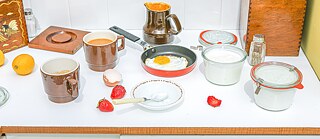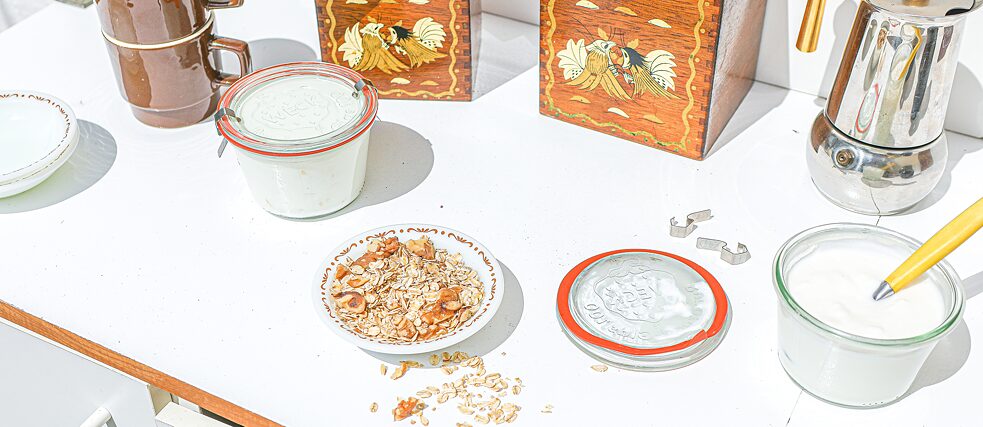Conjure Up a Delicious Breakfast
Yogurt
You can buy a variety of yogurts at any supermarket or corner store. But with a little time and patience, you can also easily make it yourself. Like so many foods that take time, the result is a particularly tasty product that conjures up delicious meals in your breakfast bowl.
Why make yogurt yourself?
Our grandmothers and their grandmothers made many of the products that we so routinely buy in the supermarket today. They fermented their own sauerkraut, aged their own cheese, and hung delicious hams in the smokehouse. Today, we’re used to being able to have everything immediately available all the time.Sometimes we’re so impatient for a dish, the few steps to the grocery store around the corner are already too long to wait. But what if we didn’t always have access to all these foods? Say, for example, if a pandemic prevented us from moving freely anywhere at any time? Wouldn’t it be nice to be able to fill our fridge without having to step outside? Wouldn’t it be great to preserve this knowledge for future generations? We don’t always have to make everything ourselves, but knowing how to do it can be immensely helpful in some situations!
Let’s get started and make our own yogurt!
Ingredients
- 2 tablespoons of ready-made plain yogurt, preferably high quality, with at least 3.5% fat content
- 1 liter (or 32 ounces) of fresh milk (whole milk or milk with reduced fat content — the more fat, the creamier the yogurt will be)
- A food thermometer, if you have one
Directions
Bring the fresh milk to a boil in a saucepan, and cool again to 40°C/105°F. Add two tablespoons of yogurt and mix, preferably with a whisk, until evenly blended. Pour the liquid into containers. You can use small plastic jars, but screw-top jars or canning jars of any size are also ideal.Now, the liquid must be allowed to mature at a reasonably uniform temperature. There are several methods for this:
- Wrap the containers in a warm blanket and maybe even put them under a warm down comforter.
- An insulated box made of Styrofoam, often used for transporting chilled or warm food, also retains the temperature very well. You can also put a heated cherry pit pillow inside to help.
- Some appliances like multi-cookers, dehydrators, and fermenting stations offer a fermenting or yogurt program that maintains a given temperature.
The containers are now left completely untouched in this cozy warm environment for eight hours so that the yogurt cultures can do their work. After this waiting period, you can put the jars in the refrigerator. Feel free to indulge your curiosity by checking if the milk has turned into yogurt. For your next yogurt culture, take two tablespoons of this yogurt, add milk, and repeat the process as described above.







